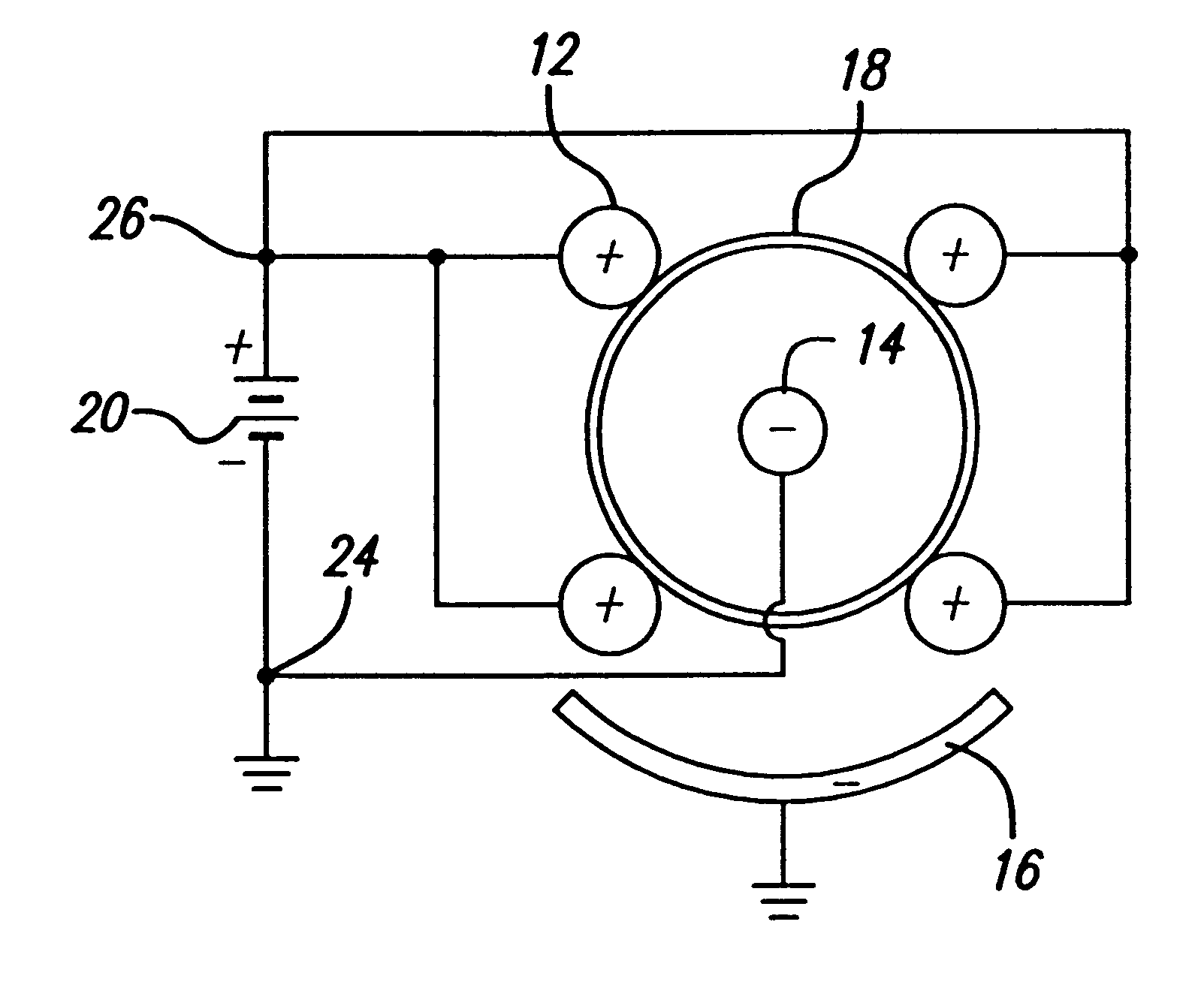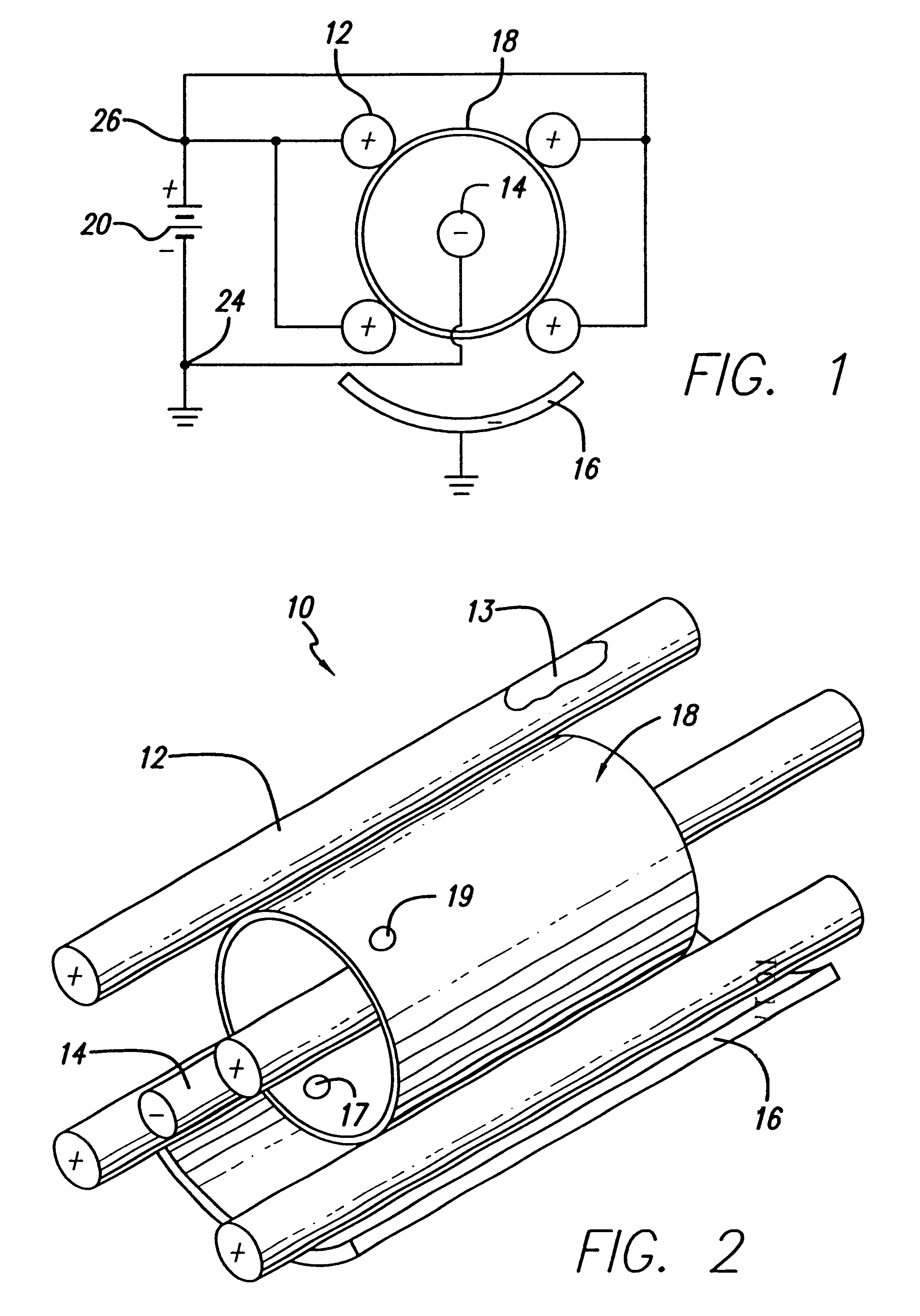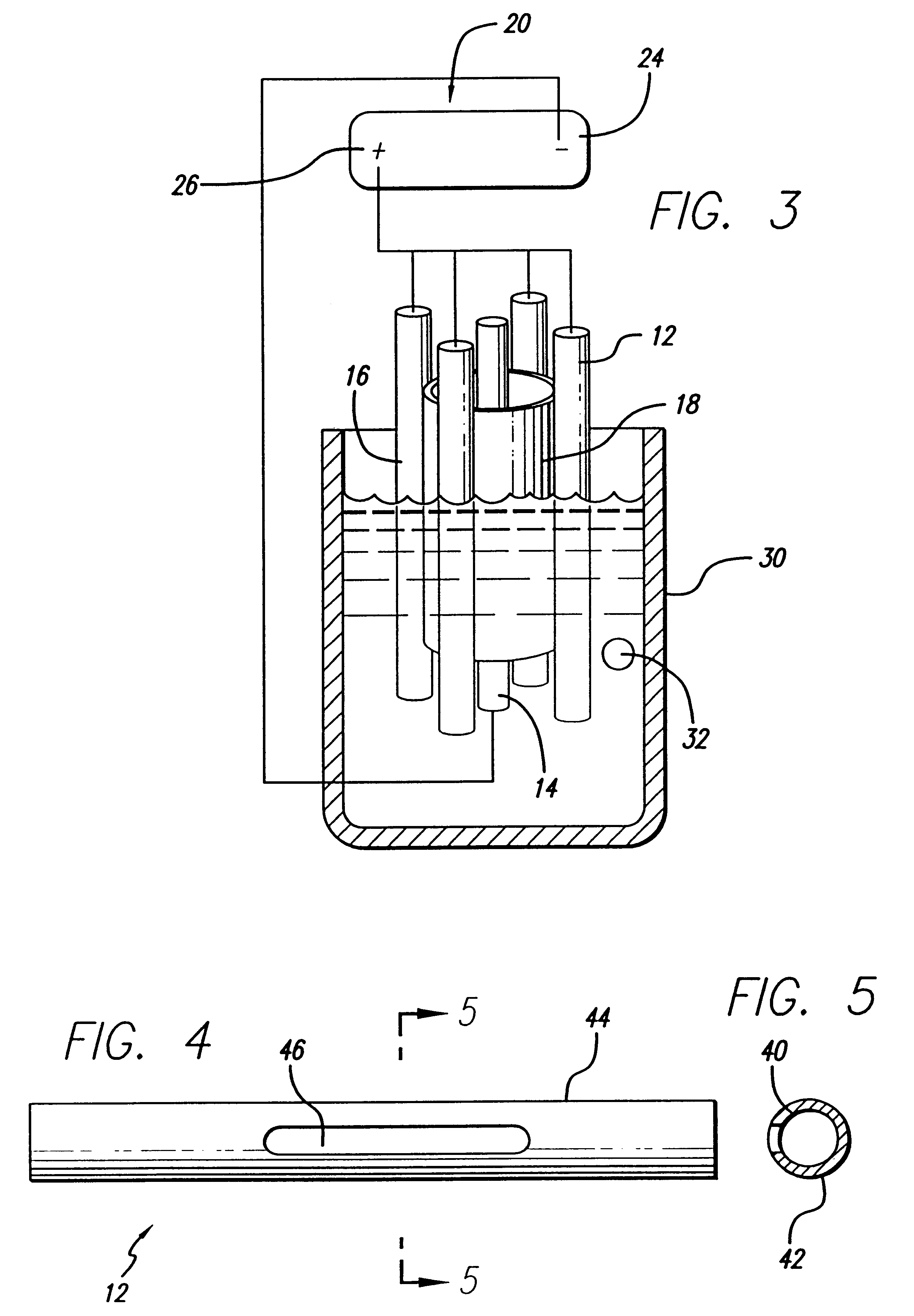Electro-polishing fixture and electrolyte solution for polishing stents and method
a technology of electrolyte solution and electrolyte solution, which is applied in the direction of prosthesis, manufacturing tools, blood vessels, etc., can solve the problems of coarse surface finish unsuitable for living tissue implantation, ineffective uniform polishing of tubular stent interior and exterior surfaces, and simple immersion in electrolyte baths. achieve the effect of high degree of uniformity in polishing
- Summary
- Abstract
- Description
- Claims
- Application Information
AI Technical Summary
Benefits of technology
Problems solved by technology
Method used
Image
Examples
example
With reference to FIG. 3, the following is a detailed example of polishing a nickel-titanium stent using the electro-polishing fixture and electrolyte of the present invention. A nickel-titanium stent of 8 mm diameter, with a length of 20 mm, with a wall thickness of 0.15 mm and a resistence of 9 ohms was descaled by bead blasting and then placed over the center cathode 14 and within the holding anodes 12 of the polishing fixture 10 of the present invention. Four anodes 12 proved sufficient to maintain a uniform current density between the stent and the cathodes 14 and 16. In order to provide a preferred path for current flow, the anodes 12 possessed a resistence of 0.006 ohms. In order to achieve the desired degree of polishing on the outside of the stent, the curved exterior cathode 16 was radially spaced at 6 mm from the stent exterior surface. The electro-polishing was conducted in about 500 ml of electrolyte 32 which comprised a solution of about 465 ml of absolution methanol, ...
PUM
| Property | Measurement | Unit |
|---|---|---|
| surface roughness | aaaaa | aaaaa |
| temperature | aaaaa | aaaaa |
| surface roughness | aaaaa | aaaaa |
Abstract
Description
Claims
Application Information
 Login to View More
Login to View More - R&D
- Intellectual Property
- Life Sciences
- Materials
- Tech Scout
- Unparalleled Data Quality
- Higher Quality Content
- 60% Fewer Hallucinations
Browse by: Latest US Patents, China's latest patents, Technical Efficacy Thesaurus, Application Domain, Technology Topic, Popular Technical Reports.
© 2025 PatSnap. All rights reserved.Legal|Privacy policy|Modern Slavery Act Transparency Statement|Sitemap|About US| Contact US: help@patsnap.com



